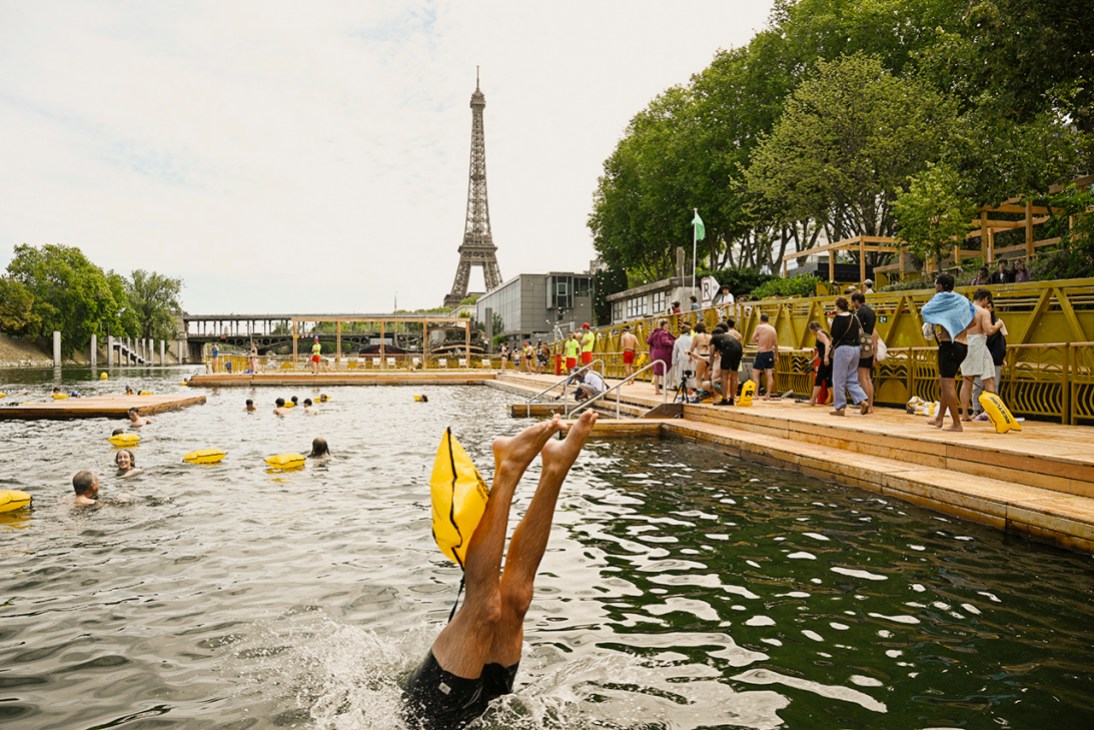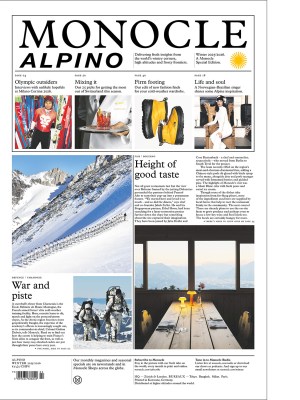The Seine’s reopening to swimmers marks a watershed moment for Paris’s civic renewal
For the first time in more than a century, Parisians have been allowed to swim in the Seine. Three outdoor bathing areas opened to the public this weekend amid a searing heatwave, though authorities had to temporarily close them in response to a heavy downpour as Paris’s 19th-century sewage system has a habit of overflowing. Nevertheless, residents turned out in force for their opening on Saturday, with many expressing delight at the opportunity to cool off, despite long queues. As the Seine is one of Europe’s busiest waterways, every swimmer had to be tethered to an unsightly inflatable yellow lifebuoy. Le Parisien is already asking whether the rubber-ducky hue of the ugly personal floats will be the colour of the summer.
The reopening of the Seine to the public for the first time since the 1920s is a triumph for the city’s mayor, Anne Hidalgo. She spearheaded the creation of these free-to-access swimming spots, which were promised ahead of the 2024 Paris Olympics. The initiative is part of the Paris Plages project, which was launched in 2002 by the then-mayor, Bertrand Delanoë, who sought to turn once-dull riverbanks into sandy beaches.

Some €1.4bn were spent on cleaning up the Seine, while millions more were lavished on constructing the swimming spots. The vision of a Paris that makes full use of its famous waterway is finally starting to take shape.
The move is Hidalgo’s most significant step towards recentring the French capital around its public spaces. It follows her extension of Paris’s cycle lanes and the permanent closure of Rue de Rivoli to most private vehicles. The expansion of her ambition to the Seine’s waters is not only highly symbolic but also smart public policy: this month’s intense heatwave has underlined how unprepared Paris is for extreme weather. The city’s historic buildings, with their lack of air conditioning, are ill-equipped for the summers to come. A swimmable Seine will go some way towards making future heatwaves easier to endure. But the project will only be successful if its current capacity of 600 swimmers across three sites is increased and the city finds a way to keep people swimming throughout the summer.
Hidalgo has been criticised for some of her costlier efforts to remake Paris, which might have scuppered her one-time presidential ambitions. But a swimmable Seine is a big achievement for the capital, which has changed more during her stewardship than under any of her recent predecessors. Dive in and see for yourself: Paris has finally joined the ranks of great cities where it makes sense to keep some swimwear and a towel to hand as you explore. Just make sure that your trunks don’t clash with yellow.
Bouvier is Monocle’s Paris bureau chief. For more on city swimming and improving urban waterways, listen to our report from the Swimmable Cities Conference in Rotterdam.



